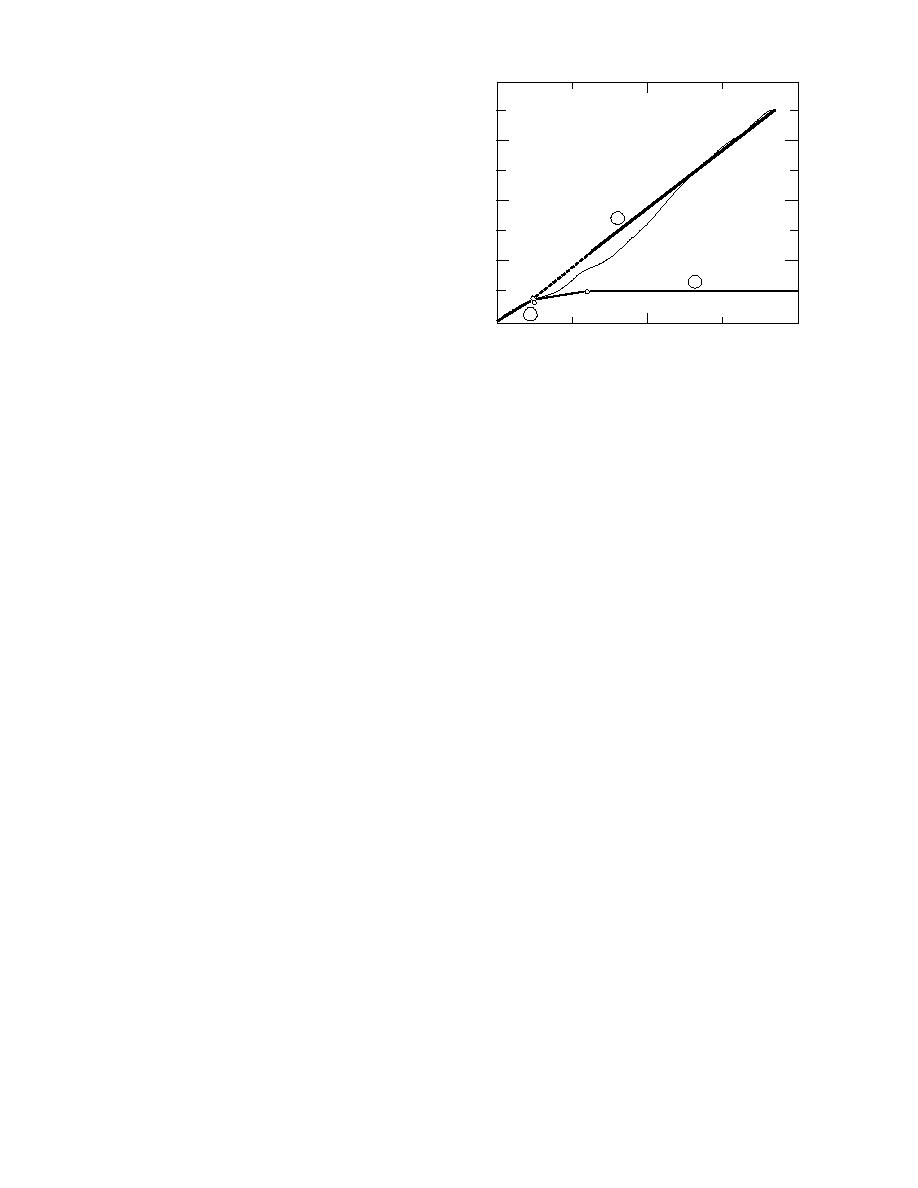
Welding
8
After selection of steel, welding is the next most
important component in the reliability of the struc-
ture of ships (Dick et al. 1987). Welds in ships must
6
withstand the corrosive effects of seawater, stresses
caused by cargo, icebreaking operations and wave-
P/P
induced motions. The biggest variable in welding
c
4
technology is the skill of the welder, especially
N
when working in confined spaces. To determine
Experimental Results
the reliability of a structure, the designer of a ship
2
must take into consideration the flaws in the ma-
terial as well as in the welds. The importance of
F
A
quality control in welding can be assessed from
C
E
the statistics that 95% of all defects in a structure
0
4
2
originate from defects within the welded zone.
W/t
The fracture toughness of a weld depends on
Figure 14. Pressure vs. deflection, showing domains of
the method of weld deposition, including the rate,
different behaviors from small to large deflection (after
the number of passes, heat input and electrode size.
Ratzlaff and Kennedy 1986). Along the vertical axis, the
The variations in weld toughness may be larger
applied pressure P is made nondimensional by Pc, the pres-
than those of the parent materials. Caution should
sure at which collapse (point C) is assumed to take place by
be exercised not to degrade the toughness proper-
formation of three hinges without membrane action. Along
ties of a weld by using large electrodes and fast
the horizontal axis, the maximum deflection W is made non-
rates of deposition in the interests of cost saving.
dimensional by the plate thickness t. The curve labeled E
Research on reducing the accelerated corrosion of
represents elastic flexure with an elastic membrane up to the
welds is under way in different parts of the world.
complete formation of an edge hinge. The curve labeled F
represents elastic flexure without membrane action, followed
Plating
by the formation of the first hinge and then three hinges. The
The plating contributes the largest component
curve labeled N represents ideal membrane action.
to the structural weight of most ships and, together
with the frames and the stringers, it forms the stiff-
ened panels that resist the loads on a ship (Dick et
with respect to the collapse load predicted by the
al. 1987). While the weight of a ship can be reduced
formation of three hinges without membrane ac-
by reducing the plate thickness and by increasing
tion, and the deflection is made nondimensional
the framing, this increases the cost of fabrication.
with respect to the plate thickness. Figure 14 shows
When a rectangular plate supported by frames
that the curve depicting the experimental load-car-
on four sides is loaded by uniform pressure that
rying capacity of a plate is initially close to that
acts perpendicular to its surface, the deflections
predicted by elastic flexure theory for small deflec-
and the stresses in the plate can be calculated by
tions, and then it approaches that predicted by the
the small deflection theory of plate bending, as is
plastic membrane action theory for large deflec-
usually done for structural analysis. This theory
tions. This suggests that thick plates form plastic
ignores the membrane stresses that develop be-
hinges before the membrane action is activated
cause of large deflections and yielding of the ma-
(Ratzlaff and Kennedy 1986).
terial. As a result of ignoring the membrane ac-
tion, the load carrying capacity estimated from
small deflection theory is small compared to those
The frames support the shell plates and resist
obtained from large-deflection theories and experi-
the loads on the shell by bending and shear defor-
ments.
mation. Inspection of ice-damaged vessels has re-
Figure 14 shows plots of load vs. deflection ob-
vealed that failure takes place consistently in the
tained from experimental results and two plastic
supporting frames rather than the hull plating
analyses--one that considers elastic flexure fol-
(Dick et al. 1987, DesRochers et al. 1994). Frames
lowed by formation of three plastic hinges with-
have several components: the shell plate that acts
out any membrane action, and the other that con-
as a flange, a web, an internal flange (optional),
siders only ideal plastic membrane action. The
end brackets (optional), tripping brackets (op-
loads in the plots have been made nondimensional
tional) and cutouts (optional).
14



 Previous Page
Previous Page
